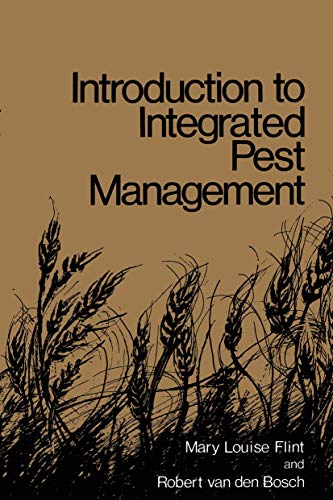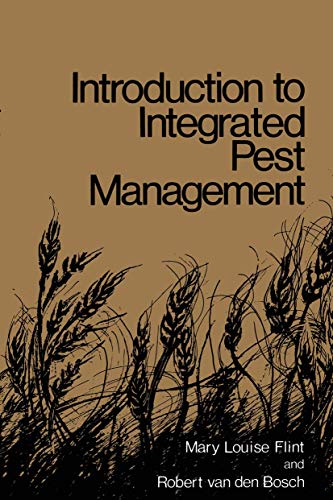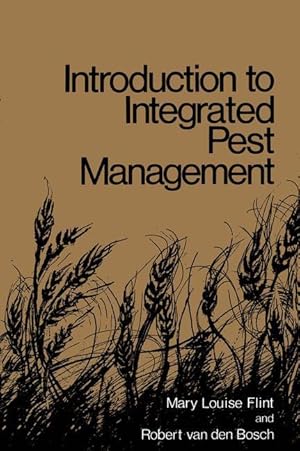introduction integrated pest management di flint m l (7 risultati)
Filtri di ricerca
Tipo di articolo
- Tutti i tipi di prodotto
- Libri (7)
- Riviste e Giornali (Nessun altro risultato corrispondente a questo perfezionamento)
- Fumetti (Nessun altro risultato corrispondente a questo perfezionamento)
- Spartiti (Nessun altro risultato corrispondente a questo perfezionamento)
- Arte, Stampe e Poster (Nessun altro risultato corrispondente a questo perfezionamento)
- Fotografie (Nessun altro risultato corrispondente a questo perfezionamento)
- Mappe (Nessun altro risultato corrispondente a questo perfezionamento)
- Manoscritti e Collezionismo cartaceo (Nessun altro risultato corrispondente a questo perfezionamento)
Condizioni Maggiori informazioni
- Nuovo (5)
- Come nuovo, Ottimo o Quasi ottimo (Nessun altro risultato corrispondente a questo perfezionamento)
- Molto buono o Buono (2)
- Discreto o Mediocre (Nessun altro risultato corrispondente a questo perfezionamento)
- Come descritto (Nessun altro risultato corrispondente a questo perfezionamento)
Legatura
Ulteriori caratteristiche
- Prima ed. (1)
- Copia autograf. (Nessun altro risultato corrispondente a questo perfezionamento)
- Sovracoperta (Nessun altro risultato corrispondente a questo perfezionamento)
- Con foto (1)
- Non Print on Demand (6)
Lingua (1)
Spedizione gratuita
Paese del venditore
Valutazione venditore
-
Introduction to Integrated Pest Management
Da: Better World Books, Mishawaka, IN, U.S.A.
Prima edizione
EUR 6,06
Convertire valutaGratis per la spedizione in U.S.A.Quantità: 1 disponibili
Aggiungi al carrelloCondizione: Good. 1st Edition. Former library book; may include library markings. Used book that is in clean, average condition without any missing pages.
-
EUR 17,67
Convertire valutaEUR 14,87 per la spedizione da Regno Unito a U.S.A.Quantità: 1 disponibili
Aggiungi al carrelloCondizione: Good. This is an ex-library book and may have the usual library/used-book markings inside.This book has hardback covers. In good all round condition. Please note the Image in this listing is a stock photo and may not match the covers of the actual item,550grams, ISBN:0306406829.
-
Introduction to Integrated Pest Management (Paperback)
Editore: Springer-Verlag New York Inc., New York, NY, 2012
ISBN 10: 1461592143 ISBN 13: 9781461592143
Lingua: Inglese
Da: Grand Eagle Retail, Bensenville, IL, U.S.A.
EUR 104,17
Convertire valutaGratis per la spedizione in U.S.A.Quantità: 1 disponibili
Aggiungi al carrelloPaperback. Condizione: new. Paperback. Integrated control of pests was practiced early in this century, well before anyone thought to call it "integrated control" or, still later, "integrated pest management" (IPM), which is the subject of this book by Mary Louise Flint and the late Robert van den Bosch. USDA entomologists W. D. Hunter and B. R. Coad recommended the same principles in 1923, for example, for the control of boll weevil on cotton in the United States. In that program, selected pest-tolerant varieties of cotton and residue destruction were the primary means of control, with insecticides consid ered supplementary and to be used only when a measured incidence of weevil damage occurred. Likewise, plant pathologists had also developed disease management programs incorporating varietal selection and cul tural procedures, along with minimal use of the early fungicides, such as Bordeaux mixture. These and other methods were practiced well before modern chemical control technology had developed. Use of chemical pesticides expanded greatly in this century, at first slowly and then, following the launching of DDT as a broadly successful insecticide, with rapidly increasing momentum. In 1979, the President's Council on Environmental Quality reported that production of synthetic organic pesticides had increased from less than half a million pounds in 1951 to about 1.4 billion pounds-or about 3000 times as much-in 1977. Integrated control of pests was practiced early in this century, well before anyone thought to call it "integrated control" or, still later, "integrated pest management" (IPM), which is the subject of this book by Mary Louise Flint and the late Robert van den Bosch. Shipping may be from multiple locations in the US or from the UK, depending on stock availability.
-
EUR 102,17
Convertire valutaEUR 3,41 per la spedizione in U.S.A.Quantità: Più di 20 disponibili
Aggiungi al carrelloCondizione: New.
-
EUR 115,55
Convertire valutaEUR 13,77 per la spedizione da Regno Unito a U.S.A.Quantità: Più di 20 disponibili
Aggiungi al carrelloCondizione: New. In.
-
Introduction to Integrated Pest Management (Paperback)
Editore: Springer-Verlag New York Inc., New York, NY, 2012
ISBN 10: 1461592143 ISBN 13: 9781461592143
Lingua: Inglese
Da: AussieBookSeller, Truganina, VIC, Australia
EUR 184,99
Convertire valutaEUR 31,62 per la spedizione da Australia a U.S.A.Quantità: 1 disponibili
Aggiungi al carrelloPaperback. Condizione: new. Paperback. Integrated control of pests was practiced early in this century, well before anyone thought to call it "integrated control" or, still later, "integrated pest management" (IPM), which is the subject of this book by Mary Louise Flint and the late Robert van den Bosch. USDA entomologists W. D. Hunter and B. R. Coad recommended the same principles in 1923, for example, for the control of boll weevil on cotton in the United States. In that program, selected pest-tolerant varieties of cotton and residue destruction were the primary means of control, with insecticides consid ered supplementary and to be used only when a measured incidence of weevil damage occurred. Likewise, plant pathologists had also developed disease management programs incorporating varietal selection and cul tural procedures, along with minimal use of the early fungicides, such as Bordeaux mixture. These and other methods were practiced well before modern chemical control technology had developed. Use of chemical pesticides expanded greatly in this century, at first slowly and then, following the launching of DDT as a broadly successful insecticide, with rapidly increasing momentum. In 1979, the President's Council on Environmental Quality reported that production of synthetic organic pesticides had increased from less than half a million pounds in 1951 to about 1.4 billion pounds-or about 3000 times as much-in 1977. Integrated control of pests was practiced early in this century, well before anyone thought to call it "integrated control" or, still later, "integrated pest management" (IPM), which is the subject of this book by Mary Louise Flint and the late Robert van den Bosch. Shipping may be from our Sydney, NSW warehouse or from our UK or US warehouse, depending on stock availability.
-
Introduction to Integrated Pest Management
Da: moluna, Greven, Germania
EUR 92,27
Convertire valutaEUR 48,99 per la spedizione da Germania a U.S.A.Quantità: Più di 20 disponibili
Aggiungi al carrelloCondizione: New. Dieser Artikel ist ein Print on Demand Artikel und wird nach Ihrer Bestellung fuer Sie gedruckt. Integrated control of pests was practiced early in this century, well before anyone thought to call it integrated control or, still later, integrated pest management (IPM), which is the subject of this book by Mary Louise Flint and the late Robert van d.




